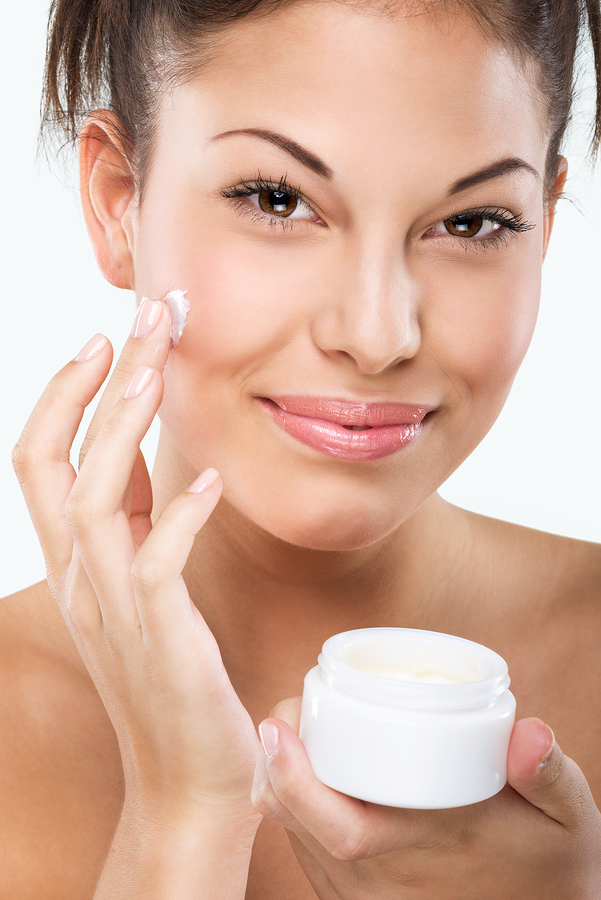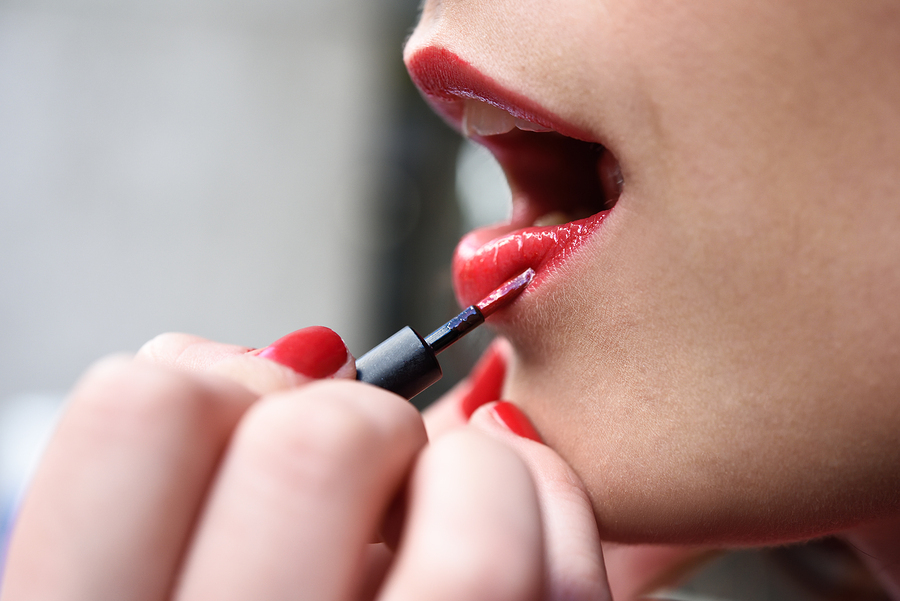It can be overwhelming — the world of cosmetics. With new products and tools coming out all the time and more videos and tutorials than ever, it’s easy for any aspiring cosmetologist to get lost in all this seemingly new information. Fortunately, there are a number of makeup tips that are tried and true:
1.) Never skip moisturizer

Moisturizer should be applied to a clean face before any makeup.
Whether you’re working with a client with oily skin, or have oily skin yourself, it may seem counterintuitive to add moisture. But often times oil is the body’s way of overcompensating when overly-drying products are used on the skin. Making sure to use a daily moisturizer will ensure that skin stays balanced and will provide a smoother canvas for any makeup.
2.) Clean your brushes
Whether it’s blush brushes, makeup sponges, or even your fingers, it’s vital to keep the tools you’re using to apply makeup clean. Bacteria can build up on brushes and make your skin more prone to breakouts with every use if you don’t properly disinfect them. This goes for not just the bristles, but handles too. Additionally, if you’re a beginner cosmetologist, you may not have too many brushes in your kit and you’ll want to make sure you’re using clean ones so you don’t have leftover color transferring where you don’t want it.
3.) When in doubt, blend

Proper blending can create an airbrushed look.
When it comes to most eyeshadow and contouring techniques, unless you’re going for something deliberately editorial, blending out your color is always a safe bet. Small, fluffy blending brushes can diffuse harsh lines on the eyes while beauty blender sponges can soften any foundation lines caused by brushes.
4.) Match foundation correctly
This means matching the color to your neck. Not your hand. Not your face. Matching to the neck will ensure that you’re choosing a shade that will blend in seamlessly with the rest of your body. You should also try to figure out whether you’re working with skin that has cool, warm, or neutral undertones. These are important in helping narrow down your shade selection so you’re not picking colors that may look too pink on lighter skin or gray on darker skin.
5.) Don’t forget about lighting
The light in the space where you’re applying makeup matters. If you’re putting on makeup in a room that’s lit entirely with fluorescent lighting, your makeup may look different in natural light. Likewise, lighting is important to consider in terms of where you or your client is going with this makeup look. If it’s an evening event where lights are likely dim, it may make more sense to create a more dramatic look in order to make an impact.
6.) Exfoliate lips

Bold lip colors look best on exfoliated lips.
Just as it’s important to exfoliate your skin of dead cells, it’s important to exfoliate your lips if you want them to retain moisture and wear lipstick properly. A simple combination of coconut oil and sugar can smooth lips and provide an ideal canvas for lip color.
7.) Consider the order you apply products
If you’re going to be creating a dramatic, smokey eye, you may have some shadow fallout. The last thing you’ll want is for that dark shadow to smudge all over your time-consuming foundation application. In a case like this, it makes the most sense to apply eye makeup first. Likewise, if you’re mixing formulations, the order in which you apply those products matters. If you’re using a liquid foundation but want to apply a powder blush, you’ll want to apply a translucent powder on top of the foundation (before the blush) because that will make the blush easier to blend.
While cosmetic and grooming trends come and go, these makeup tips have stood the test of time and can guide any aspiring cosmetologist down the right path. Check out our courses to learn more techniques.
